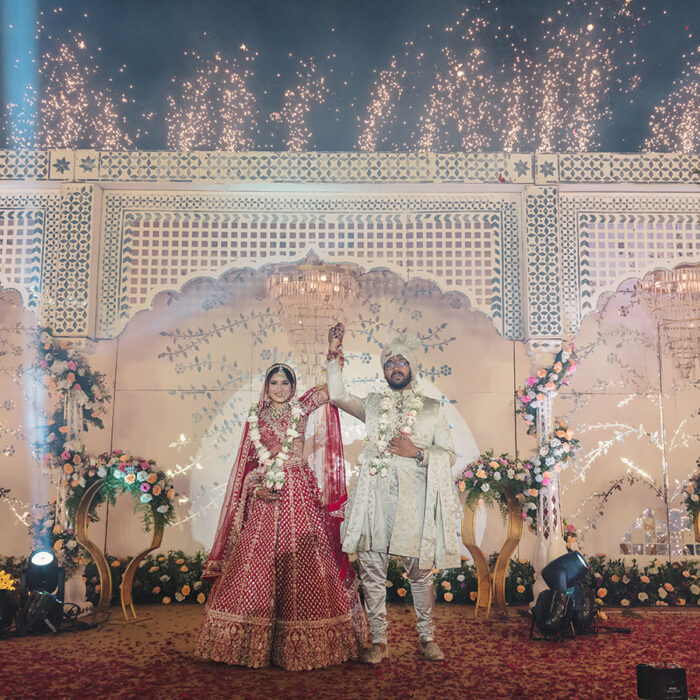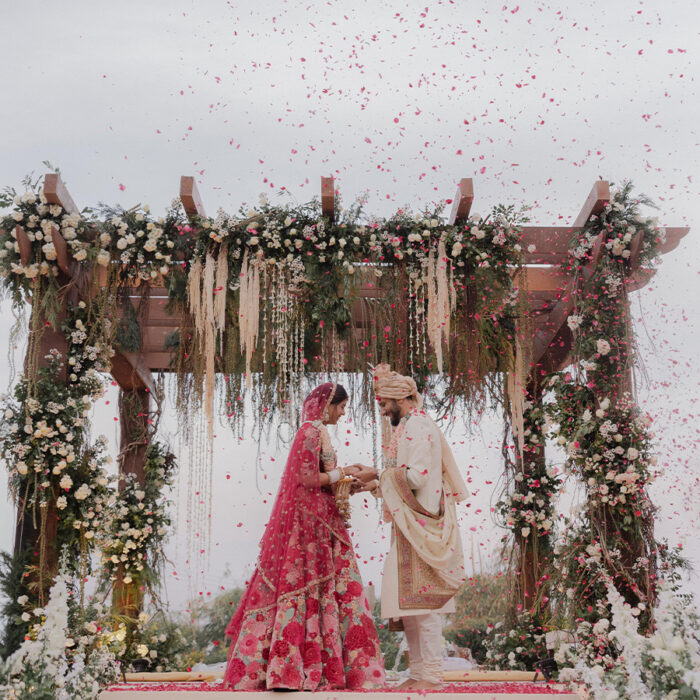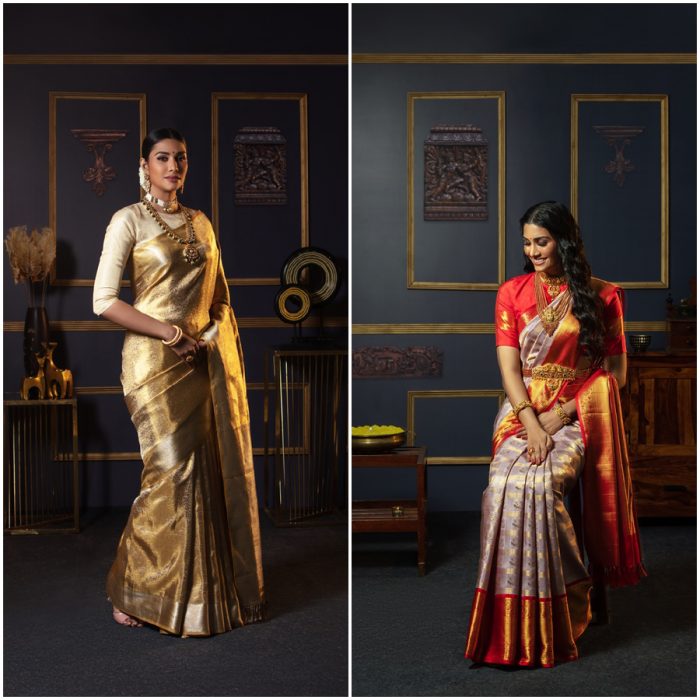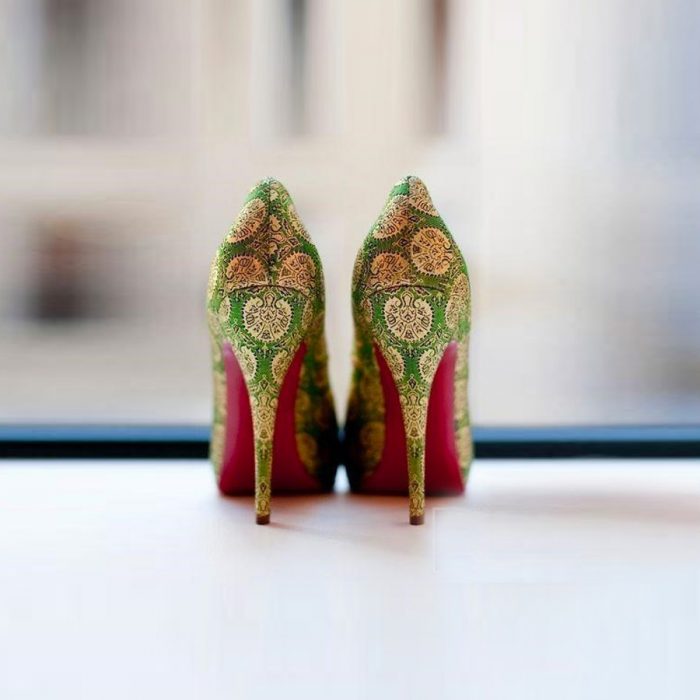Malayali Weddings: Customs and Traditions
Rituals, customs, style and more! Here's everything you need to know about Hindu Malayali Weddings.
Kerala – rightfully called ‘God’s Own Country’ – is a tropical paradise with swaying palm trees, expansive beaches, serene backwaters, lush farms and myriad cultures. Even their traditional weddings have their own distinct array of memorable rituals.
Malayali weddings are a little different from weddings in other parts of India, be it in terms of the bridal look, understated decor or time of nuptials. In this third edition of our Wedding Tradition Series, we explore the nuances and rituals of traditional Hindu Malayali weddings.
Our Wedding Tradition Series aims to answer your broad questions about regional ceremonies and their significance, how to dress for different functions and embrace and enjoy another culture. Here, you are invited to experience the various elements of a Hindu Malayali wedding.
Wedding Functions
Nischayam:
The first ceremony after the fixing of the marriage, the ‘Nischayam’ ceremony marks the official engagement where the two families often exchange the matched horoscopes, as well as gifts. This is followed by the ‘Mothiram Maattal,’ which is the ring ceremony.
 Photos Courtesy: Nidhin Foma Photography
Photos Courtesy: Nidhin Foma Photography
Mehndi:
The mehndi ceremony at a Malayali wedding commences with the bride’s aunts applying the first few touches of henna to her hands before professional mehndi artists take over with their intricate designs.
 Photo Courtesy: Emotion in Pictures
Photo Courtesy: Emotion in Pictures
Pre-Nuptial Blessing Ceremony:
Held a day before the wedding, the pre-nuptial ceremony involves the bride and groom receiving blessings from their loved ones at functions hosted in their respective homes. It is often followed by a feast.
Madhuparkam:
In this ceremony, the groom’s feet are washed by the bride’s father and other relatives when he arrives for the wedding ceremony. He then presents the bride’s father with a white Kasavu saree that she has to wear during the wedding.
Kanyadaanam:
Much like other Indian cultures, the Malayali wedding includes a giving away ceremony involving the bride. Called ‘Kanyadaanam,’ it is performed around a holy fire called ‘Veli.’ The couple have to take three rounds around it, after which the bride’s father hands the groom a ‘Taali’ (mangalsutra) to tie around the bride’s neck in a ritual known as ‘Taalikettu.’
 Photo Courtesy: Vikhyath Media
Photo Courtesy: Vikhyath Media
Sparsham:
In this final ritual, the groom and the bride sit on the ground facing each other with their foreheads touching. The bride pours rice into the holy fire as the priest chants, after which the groom puts the bride’s foot on a grinding stone that symbolizes her leaving her family for a new home.
 Photo Courtesy: Nidhin Foma Photography
Photo Courtesy: Nidhin Foma Photography
Sadhya Lunch:
The traditional meal of 25 items served on plantain leaves, the pure vegetarian Sadhya Lunch concludes the wedding festivities.
 Photo Courtesy: Satyajeet Dubey
Photo Courtesy: Satyajeet Dubey
Kudivep and Griha Pravesh:
Unlike many other cultures, the Malayali weddings do not include a ‘bidaai’ (bridal farewell). Instead, the ritual of ‘Griha Pravesh’ focuses on the happy new chapter of the bride arriving at her new home. The custom of the groom’s mother welcoming the newly-wed couple with ‘diyas’ (earthen lamps) is called ‘Kudivep,’ after which the bride enters the home with her right foot while carrying a lamp which is symbolic of her bringing new light into the house.
Hindu Nair weddings
While most functions mentioned above remain the same for Hindu Nair weddings, there are a couple of rituals that differ.
Dakshina Kodukkal:
The wedding day begins with the ‘Dakshina Kodukkal’ ceremony held in the bride and groom’s respective homes, where they touch the feet of their elders and seek everyone’s blessings before heading to the wedding venue.
Pudamuri:
In the Nair ceremony, the ‘Kanyadaan’ is followed by ‘Pudamuri,’ where the groom gifts his bride a saree and blouse on a platter, signifying that he will provide for her for the rest of her life. The couple exchange garlands and are blessed with gifts as the bride’s father officially hands her over to the groom.
 Photos Courtesy: Lalu Ckd Photography and Nidhin Foma Photography
Photos Courtesy: Lalu Ckd Photography and Nidhin Foma Photography
Highlights of Malayali Weddings
While most South-Indian Hindu weddings share common cultural and ritual nuances, there are some elements that make a Malayali wedding a little distinct from others.
Sadhya Lunch:
The lavish pure vegetarian meal that marks the end of the wedding is probably the biggest highlight of Malayali wedding celebrations. Traditionally served on a plantain leaf, it consists of par boiled rice, a wide array of vegetables and curries, savories such as pappadam and khichdi, pickles, fruit, buttermilk, and of course dessert.
 Photo Courtesy: Macaron Gal
Photo Courtesy: Macaron Gal
Early To Wed:
While most wedding ceremonies in other regional cultures of India take place in the evening or night, Malayali couples typically tie the knot early in the morning as that time is considered to be the most auspicious according to their beliefs.
 Photo Courtesy: Bows & Vows
Photo Courtesy: Bows & Vows
Bling It On!:
While most norms of Malayali weddings, including outfits, customs and decor are typically minimal and understated, it’s a different matter when it comes to jewellery. From elaborate forehead ornaments to waist belts, bracelets, necklaces, and earrings, a Malayali bride is all about opulence when it comes to her wedding jewellery.
 Photo Courtesy: Cupido Films
Photo Courtesy: Cupido Films
Style Tips for Cool, Cultural Looks
Kasavu Saree:
The quintessential white and gold sarees introduced to mainstream media by movies such as ‘Dil Se’ and ‘Aisha,’ Kasavu creations include handwoven white or cream cotton sarees that are embroidered with pure gold zari threadwork. Bridesmaids and guests often give a Kasavu saree their own spin by teaming it with a colorful blouse and gold bling.
 Photos Courtesy: Addiction Weddings
Photos Courtesy: Addiction Weddings
Temple Jewellery:
Swap out your diamonds, polka, meenakari and pearl ornaments for some gold bling when you are hosting a Malayali wedding. Carved into traditional intricate designs, these gold creations add a regal touch to any outfit.
 Photos Courtesy: Kalyan Jeweller
Photos Courtesy: Kalyan Jeweller
Mundu:
Men can look the part by wearing traditional mundus (white and gold dhotis). Pair it with short or long kurtas or shirts in white or other colors. Roll up your sleeves, throw on some cool shades and flash that swag.
 Photos Courtesy: Kalyan Jeweller
Photos Courtesy: Kalyan Jeweller
Gajras:
Weave the delicate beauty and alluring aroma of jasmine flowers into your hair with gajras (floral garlands) that have been part of Indian bridal looks for decades. They look great with simple high or low buns, braids, and open wavy tresses.
 Photos Courtesy: Wedding Makeoverz and Wedding Bells Photography
Photos Courtesy: Wedding Makeoverz and Wedding Bells Photography
To start planning your wedding, click here.







